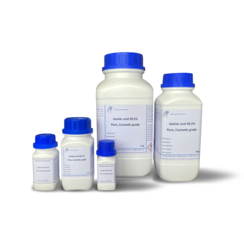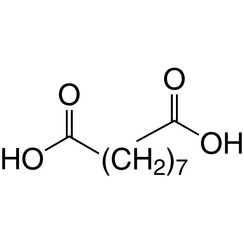You have no items in your shopping cart
Azelaic acid
Azelaic acid is an organic compound with the formula HOOC(CH2)7COOH. This saturated dicarboxylic acid exists as a white powder. It is found in wheat, rye, and barley. It is a precursor to diverse industrial products including polymers and plasticizers, as well as being a component of a number of hair and skin conditioners.
Applications
Esters of this dicarboxylic acid find applications in lubrication and plasticizers. In lubricant industries it is used as a thickening agent in lithium complex grease. With hexamethylenediamine, azelaic acid forms Nylon-6,9, which finds specialized uses as a plastic.
Medical
Azelaic acid is used to treat mild to moderate acne, both comedonal acne and inflammatory acne. It belongs to a class of medication called dicarboxylic acids. It works by killing acne bacteria that infect skin pores. It also decreases the production of keratin, which is a natural substance that promotes the growth of acne bacteria. Azelaic acid is also used as a topical gel treatment for rosacea, due to its ability to reduce inflammation.[7] It clears the bumps and swelling caused by rosacea. The mechanism of action is thought to be through the inhibition of hyperactive protease activity that converts cathelicidin into the antimicrobial skin peptide LL-37. Azelaic acid has been used for treatment of skin pigmentation including melasma and postinflammatory hyperpigmentation, particularly in those with darker skin types. It has been recommended as an alternative to hydroquinone. As a tyrosinase inhibitor, azelaic acid reduces synthesis of melanin.
Azelaic acid is also a potent 5α-Reductase inhibitor, similar to the hair loss drugs finasteride and dutasteride


